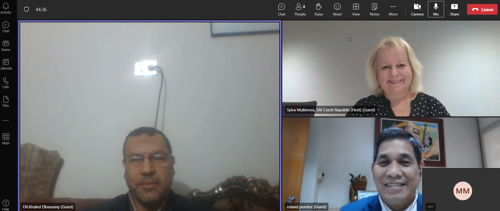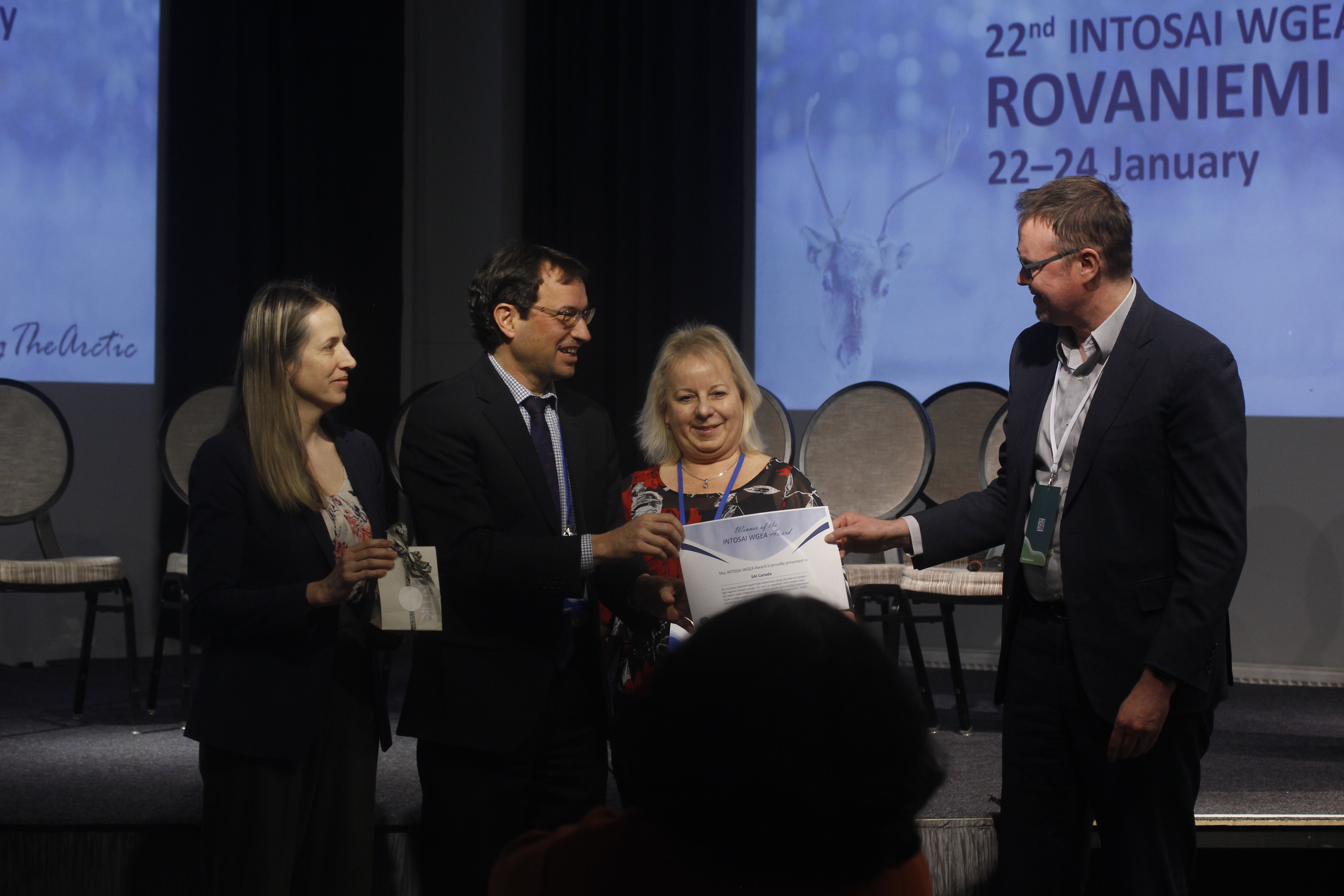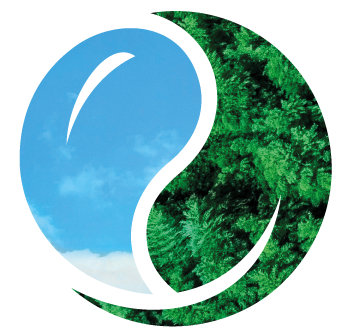Behind the Scenes: Selection process and winners of the third INTOSAI WGEA Award
03.04.2024
The INTOSAI WGEA recently awarded four SAIs for publishing impactful environmental audits. This blog will take shed light on the process behind the scenes of selecting the winning SAIs and presents the recently awarded submissions.
In 2020, the INTOSAI WGEA announced a new initiative, the INTOSAI WGEA Award - Inspiration in Environmental Auditing to be awarded biannually at the INTOSAI WGEA Assembly meeting. The first award on Best Visualization in an Environmental Audit aimed to make audit reports more visible, shorter, easier to understand and more user-friendly. The next award topic Your WGEA Story: Inspiration in Environmental Auditing, was chosen to celebrate the INTOSAI WGEA’s 30th Anniversary. It focused on contributions that could be categorized into personal narratives of improving audit work and career development or influencing public policy making.
This year's topic was Impactful Environmental Audit and included three categories:
- Presenting audit results inspiringly
- Using innovative methodology in auditing
- What makes an audit impactful
Altogether 27 SAIs submitted their nominations which shows the award is increasingly popular and important among SAIs. That's a success!
The WGEA Secretariat and Aminath Muaza from SAI Maldives brainstormed the topic of the Award and finalized the Call for nominations. After the closure of submission period, they collected all received submissions and conducted a preliminary assessment to support the Jury’s task. Aminath shared her thoughts on her role in the process: ”I feel honoured to have got the chance to work with WGEA Secretariat on pooling in ideas for the award categories and I was assigned the task to shortlist the submissions of one category. Also, it is not every day that you find the time to go through the wonderful work of our global community.”

Sylva Müllerová and Aminath Muaza presenting the
Award at the 22nd INTOSAI WGEA Assembly
Fruitful discussions and online meetings across time zones
In addition to me as the chair, the Jury members were Dr Khaled Elbasueny from SAI Egypt and Commissioner Roland Pondoc from SAI Philippines. Our cooperation during the procedure both via emails and online was successful. We also managed to overcome the seven-hour time difference and meet online. I would like to thank my colleagues for the fruitful collaboration and inspiring opinions!
Our assessment was initiated by studying all the delivered materials. In our first meeting we clarified our task and agreed on the extended criteria to select possible winners for all three categories in the order of 1st to 3rd. Surprisingly, for the second category we all had exactly the same three SAIs, only their order was different. For other categories we differed more.
In the second meeting, we focused on the possible winners by discussing the benefits and impacts of SAIs´ nominated audits, reports and tools in detail. Last, we agreed on the final ranking, which was not quite that simple, as the SAIs delivered outputs that had several benefits. Especially the third category raised a lot of discussion and we decided to share the first place between two SAIs.

The Award Jury convened online
Four winner SAIs and numerous excellent submissions
The nominations differed not only in length, but also in the scope of approach to the assignment, presence of infographics, clear structure, recommendations, extent of impact, and level of innovation. Nevertheless, all nominations would have been worthy winners. However, not all of them could be awarded. Some SAIs even submitted nominations in all three categories, which proves their high expertise. These were the SAIs of USA, Indonesia, Chile, and Tanzania.
The 1st category, Presenting audit results inspiringly aimed to highlight visually friendly audit products which could attract larger audience. In this category, we looked for nominations on inspiring ways to present audit results based on the adopted criteria, such as comprehensible and clear content of the report, understandable infographics, use of visualization, and clear structure and message.
The winner was SAI Canada with a Lessons Learned Report which looked back at three decades of Canada's fight against climate change. For such a complex topic, the report used various visual items such as infographics and videos, which can increase the understanding of the topic for a wider audience.
Other excellent contributions were from SAI Chile and SAI Malaysia. Since 2017, SAI Chile has included climate change in its annual audit planning. The systemized audit results are contained in the publication Public Control for a Better Democracy, which presents the importance of audit in the context of the climate crisis in a simple way.
In its Forest Management and Environmental Report, SAI Malaysia summarizes an audit which examined forest management in two aspects: activity performance and management. The report includes a clear summary of facts, graphics, diagrams, and a systemic approach to the issue.
In the 2nd category, Using innovative methodology in auditing, we looked for suitable innovative tools that could support the important but demanding step of collecting and analysing environmental data. In this category, we evaluated not only the innovative methodology but also how this method improved the audit process, its importance and possibilities of use for other SAIs, as well as international significance.
The winner was SAI Chile with a Measurement Tool, which enables the execution of analyses towards visualizing results. The tool consolidates findings and conclusions graphically ensuring a quick reader comprehension.
Other valuable contributions included the ClimateScanner project by SAI Brazil which will assess governments’ action to tackle climate crisis. It is an innovative global review which supports decisions for audit work, communicates relevant information, and shares knowledge and experience. SAI Thailand implemented an audit methodology for assessing the management and impact of water resources in the Mekong River Basin. It is a multi–dimensional analysis that covered different aspects, used various data collection techniques, and engaged diverse stakeholders.
The 3rd category, What makes an audit impactful, looked for innovative ways to define impact and to get examples of impactful audit cases. We evaluated the nominations based on their references to specific documents, drafts of new laws, guidelines, methodologies or manuals, articles, and press statements. This category received many submissions and was also the most challenging to evaluate. Therefore, we decided to award two SAIs.
So, this category had two winners: SAI Costa Rica and the European Court of Auditors. SAI Costa Rica conducted an audit on Resilience in public infrastructure which had a wide impact and led to many changes in rules, regulations, methodologies, and measures. The European Court of Auditors was awarded for the established system of measuring the impact of audits and published a Special report on desertification in the EU which resulted in the proposal of a new Soil Health Law.
Other very useful contributions covered Performance Audit on the Management of Electronic Wastes by SAI Tanzania which influenced the development of numerous important environmental regulations and policies, such as the National Environmental Policy, Environmental Management Regulations, and Investment Guide on Waste Management. SAI USA nominated two audits: Climate Resilience in the federally funded roads and Climate Change concerning agricultural producers which are both being used by Congress for legislation. The first audit identified 10 options on how to further enhance climate resilience. The results and recommendations from the second audit are similarly used in negotiations on the Farm Bill that authorizes a range of federal agriculture programs.
This year's award, with topics and categories that are highly relevant to all SAIs around the world and the highest number of nominees so far, showed the importance and prestige of such an event.
I am very happy and honoured to have been the chairman of the jury, cooperate with my colleagues and get to know all submitted contributions. It was a very interesting and engaging exercise which proved again that although SAIs have different mandates, different organizational structures, and are based across the world, they have a lot in common!
In conclusion for those SAIs who did not win even though their submissions were excellent: “Don't stop trying and apply for the next award!”
The blog is written by Sylva Müllerová, who chaired the INTOSAI WGEA Award Jury in 2024. Sylva has an experience of over two decades on environmental audits and has been engaged with the Working Group since 1996. For 12 years she held the position of Director of the International Relations Department. Currently Sylva works as an auditor in the Social Affairs, the Environment, Education, Culture, and Healthcare Audit Department at the Supreme Audit Office of the Czech Republic.

 Photo: Fanni Kuittinen
Photo: Fanni Kuittinen

